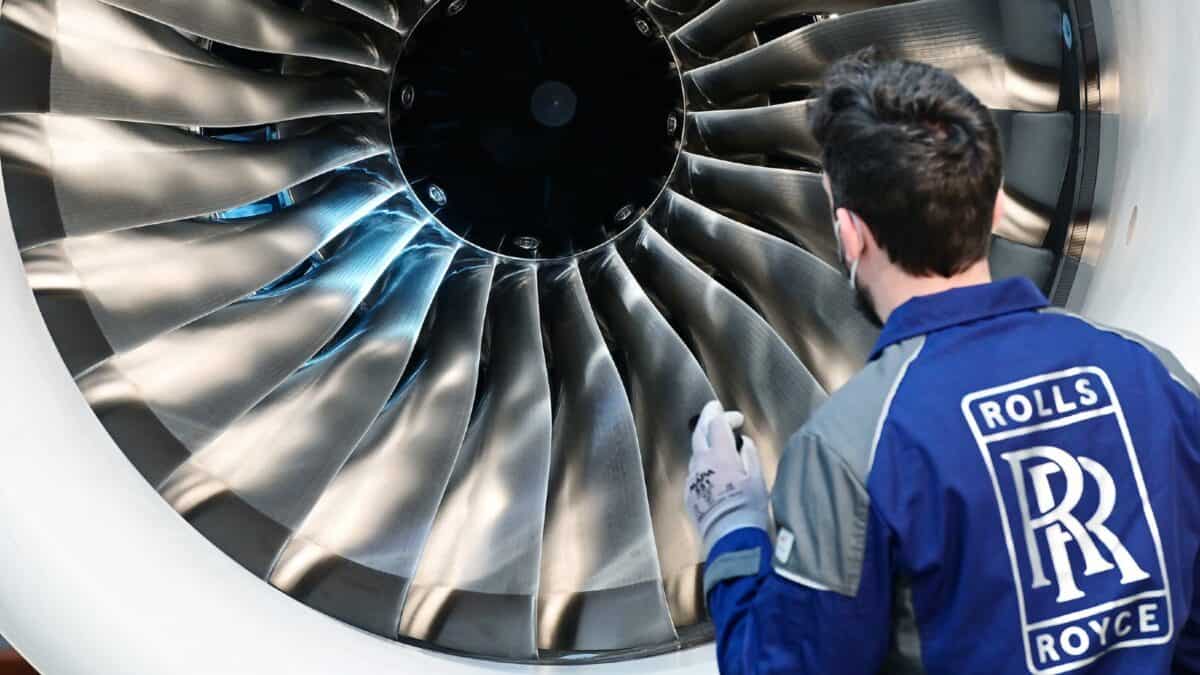
Image source: Rolls-Royce plc
It has been an incredible 18 months for shareholders in aeronautical engineer Rolls-Royce (LSE: RR). Not only was it the strongest performer in the FTSE 100 index of leading companies last year, the Rolls-Royce share price is up 55% so far in 2024.
It started last year selling for pennies and has since sailed past the £1, £2 and £3 levels. It went past £4 in March and last month edged close to £5, though it has since fallen slightly.
Could it hit £10?
What drives share prices?
Before digging into the details of the specific business, it is good to bear in mind what moves share prices. Sometimes, this is broken into two elements – so-called ‘fundamentals‘ and ‘sentiment‘.
Fundamentals are how good a business is and what it is worth. That sounds easy to judge but in fact it can be very difficult.
To take a simple example, how much are Rolls-Royce’s many patents worth as an asset? What they are worth to Rolls may be very different to the price a rival would pay for them in a fire sale.
But things get even harder when trying to consider the future value of the business.
Civil aviation demand is broadly cyclical based on the economy – and can move around unpredictably based on unforeseen events like the pandemic. That is a risk for Rolls-Royce revenues and profits, as well as making it hard to judge the fundamental value of the business.
The second component of valuation is sentiment. How do investors feel about a business?
Can it really be that Rolls-Royce’s business is worth 55% more than it was in January? It could be.
Valuing Rolls-Royce shares
Since then, we have had last year’s results, which showed strong progress as the company swung back into profitability.
On the other hand, investor excitement could have got ahead of reality. Rolls has set ambitious medium-term targets for financial performance. Just because business improved last year does not necessarily mean that it will hit those targets.
As ever, investors need to weigh not only known performance but also how they think the business might be in future when determining what they think is a reasonable Rolls-Royce share price. The wide range of views on that is one reason for the dramatic movement seen over the past year and a half, in my view.
Onwards and upwards?
I do not think sentiment alone can push the share to £10. Then again, in early 2023, I did not expect it to push to almost £5 either.
What about fundamentals? A £10 price would be a price-to-earnings (P/E) ratio of 35. But Rolls targets underlying profit growth as much as 75% higher than last year, by 2027.
If earnings grow broadly in line with underlying profits (which they may not), that suggests a £10 share price would equate to a prospective P/E ratio in the low twenties. Quite a few FTSE 100 firms trade at that valuation, or higher.
I think that is possible for Rolls. But the business needs to keep improving at speed and external risks like demand shock might mean that does not happen. I have no plans to invest.













